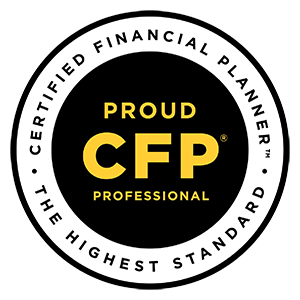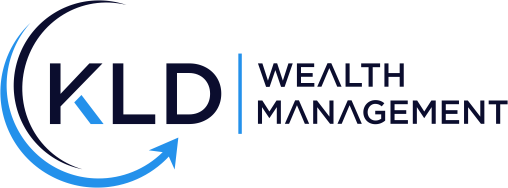Get in touch
Call or Text:
937-404-5180
Email:
dwiedmeyer@kldwealth.com
Boost Your Tax Savings While Supporting Your Favorite Causes with Qualified Charitable Distributions
You’ve just settled into your cozy chair, a steaming cup of coffee in hand, and you’re skimming through your retirement accounts when a lightbulb goes off. “What if I could support my favorite charities and potentially save on taxes at the same time?” If this thought has crossed your mind, you’re not alone.
Many savvy investors and philanthropists have discovered the power of Qualified Charitable Distributions (QCDs) to make their charitable giving more impactful while also boosting their tax savings. In this blog, we’ll explore how QCDs work, why they’re beneficial, and how you can use them to support the causes you care about without feeling the pinch in your wallet.
What is a Qualified Charitable Distribution (QCD)?
A Qualified Charitable Distribution is a direct transfer of funds from your Individual Retirement Account (IRA) to a qualified charitable organization. If you’re 70½ or older, you can make these transfers tax-free up to $100,000 annually. This means you can contribute directly to a charity from your IRA without counting the distribution as taxable income. Think of it as your IRA’s way of making a meaningful difference while saving you some tax headaches.
Why Should You Consider QCDs?
- Tax Savings:
- Avoiding Taxable Income: When you take distributions from a traditional IRA, those funds are typically taxed as ordinary income. However, if you use a QCD, the distribution isn’t included in your taxable income. This can be particularly beneficial if you’re looking to manage your tax bracket or reduce your overall tax liability.
- Benefitting from Reduced Adjusted Gross Income (AGI): Lowering your AGI can open the door to other tax benefits, such as reduced Medicare premiums or eligibility for various tax credits.
2. Supporting Charitable Causes:
- Maximizing Your Impact: By directing funds from your IRA to charities, you’re maximizing your contribution’s impact. Charitable organizations often rely on these donations to fund essential programs and services. Plus, it feels great to know you’re making a difference!
The Mechanics of QCDs: How Does It Work?
To make a QCD, follow these simple steps:
- Verify Eligibility: Ensure you’re 70½ or older. This is a requirement for making QCDs.
- Contact Your IRA Custodian: Let them know you want to make a QCD. They’ll handle the transfer directly to the charity.
- Choose a Qualified Charity: Make sure the organization is a qualified 501(c)(3) charity. Your financial advisor or tax professional can help confirm this.
- Complete the Transfer: The custodian will send the funds directly to the charity, and you’ll receive confirmation of the donation. Make sure to keep all documentation for tax purposes.
Potential Pitfalls and How to Avoid Them
- Not Meeting the Age Requirement: If you’re under 70½, you’re not eligible for QCDs. Plan ahead and use other charitable giving strategies if you’re not yet eligible.
- Exceeding the Annual Limit: The $100,000 limit is per individual, not per account. Make sure to stay within this limit to avoid any tax implications.
- Ignoring Required Documentation: Always keep records of your QCDs for tax purposes. The charity should provide you with a receipt, and your IRA custodian should confirm the distribution.
Incorporating QCDs into Your Financial Plan
QCDs can be a powerful tool in your financial toolkit. Integrating them into your broader financial strategy can help you optimize your tax situation while supporting your favorite causes. Work with a financial planner to ensure your QCDs align with your overall financial goals and charitable interests.
Qualified Charitable Distributions offer a fantastic way to give back while enhancing your financial strategy. Whether you’re passionate about supporting your community, advancing research, or any other cause, QCDs provide a unique opportunity to make a positive impact without the tax consequences. If you’re considering incorporating QCDs into your financial plan, don’t hesitate to reach out to a financial advisor. They can help you navigate the details and make the most of this tax-saving strategy.
Ready to boost your tax savings and support your favorite causes? Contact us today to learn more about how QCDs can fit into your financial plan. Your future self—and the charities you care about—will thank you.





Phone
937-404-5180
706 Deerfield Rd.
Lebanon, OH 45036
Get financial wellness tips, directly to your inbox.
Contact Us
We will get back to you as soon as possible.
Please try again later.
All Rights Reserved | KLD Wealth | Privacy Policy | Form ADV
Advisory services offered through KLD Wealth Management, LLC, an investment adviser registered with the state(s) of Ohio. Advisory services are only offered to clients or prospective clients where KLD Wealth Management, LLC and its representatives are properly registered or exempt from registration.
The information on this site is not intended as tax, accounting or legal advice, nor is it an offer or solicitation to buy or sell, or as an endorsement of any company, security, fund, or other offering. Information provided should not be solely relied upon for decision making. Please consult your legal, tax, or accounting professional regarding your specific situation. Investments involve risk and have the potential for complete loss. It should not be assumed that any recommendations made will necessarily be profitable.
The information on this site is provided “AS IS” and without warranties either express or implied and the information may not be free from error. Your use of the information provided is at your sole risk.
